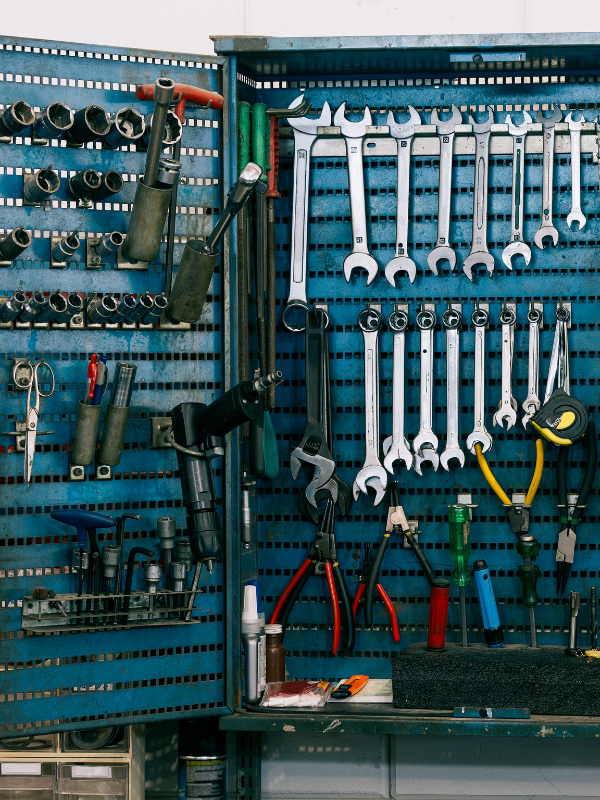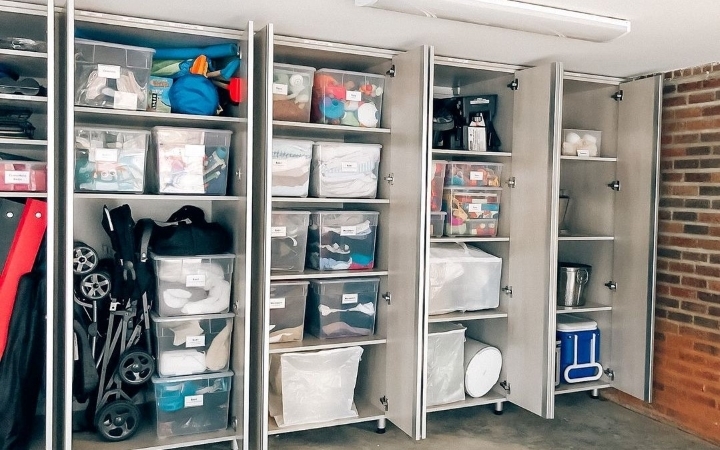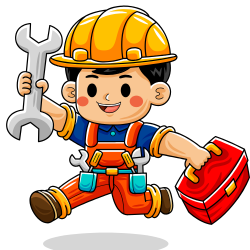
Figuring out the best way to sort and store tools can make a huge difference in how quickly you can tackle projects, keep your workspace tidy, and hang onto your tools for years. Disorganization leads to frustration and wasted time searching for that missing screwdriver or socket. If you’re starting to organize your tools or you’re looking to upgrade your current system, I’ll share some approaches and setups that work, along with some practical advice from my own experience.
Getting to Know Your Tools and Workspace
Before jumping into organizing everything, I like to begin with an honest look at the types of tools I have and the space I’m working with. Some people have massive collections of specialized tools, while others have a small set of reliable basics. Take a quick inventory of what you own and think about how often you use each item. This helps decide what should be stored within arm’s reach versus what can sit in a drawer until needed.
Whether you’re working out of a dedicated garage, a small shed, or even a corner in an apartment, knowing your space is super helpful. Wall space, cabinets, shelving, and even underbench areas can all play a role in your setup. Each type of tool storage spot offers pros and cons that depend on your tools and available space.
Smart Ways to Sort Your Tools
Sorting your tools is really the backbone of effective storage. Instead of just tossing everything into one bin, I’ve found that sorting tools by function, size, or frequency of use can save time and reduce clutter. Here’s how I break it down:
- By Type: Keep similar tools together; screwdrivers with screwdrivers, pliers with pliers, and so on.
- By Frequency: Put your go-to tools up front or on top, while rarely used specialty tools can be tucked further away.
- By Project: Group tools needed for specific recurring tasks in their own container or toolbox.
This sorting process helps a lot when you need to grab a tool quickly. For example, I keep my measuring tape and utility knife right at the top of my tool chest, because I reach for them almost every time I work on something.
Tool Storage Solutions That Work
Once you’ve sorted your tools, it’s time to think about where they’ll live. Here are some options I’ve used and recommend considering:
- Tool Chests and Cabinets: Great for organizing large sets of hand tools. Look for ones with sliding drawers and builtin dividers for easy access and separation.
- Pegboards: Pegboards are a classic garage staple, and for good reason. They keep tools visible and make it easy to hang up or grab what you need. Adding hooks, shelves, or bins gives you a lot of flexibility.
- Wallmounted Racks: These are perfect for larger tools like hammers, saws, or garden equipment. Magnetic strips are also pretty handy for storing metal tools.
- Portable Toolboxes: Having a small, portable box for basic tools is great for projects around the house or taking your setup to a friend’s place.
- Drawer Organizers and Foam Inserts: These keep things tidy inside tool drawers. Custom foam organizers are especially good for sockets and wrenches so nothing slides around.
- Storage Bins or Totes: For bigger power tools, separate bins with clear labels make a big difference. I store my cordless drill and accessories in a bin, so everything stays together.
Wallmounted Racks
Perfect for larger tools like hammers
- Look for ones with sliding drawers and builtin dividers for easy access and separation
Portable Toolboxes
Great for projects around the house
- They keep tools visible and make it easy to hang up or grab what you need.
Drawer Organizers
Good for sockets and wrenches
- For bigger power tools, separate bins with clear labels make a big difference
Pegboards
A classic garage staple
- They keep tools visible and make it easy to hang up or grab what you need.
Storage Bins
For bigger power tools
- For bigger power tools, separate bins with clear labels make a big difference
Tool Chests
For organizing large sets of hand tools.
- Look for ones with sliding drawers and builtin dividers for easy access and separation
Mixing and matching these solutions can help maximize any space, big or small. Wall space and shelving on higher levels are perfect for storage bins, while everyday tools can go in lower drawers or on pegboards for instant access.
Tips for Labeling and Tracking Your Tools

Labels sound simple, but they’re really important if you want to keep things organized for the long term. I use a basic label maker for drawers and bins. Clear labels let everyone in the house know where things go, so tools actually make it back to their home.
If you’re more techsavvy, there are some tool tracking apps and inventory systems (like Sortly or ToolWatch) available. They’re more popular in workshops or companies with lots of equipment, but even for DIY users, a quick spreadsheet that lists which tool is where can keep things from disappearing.
Maintaining an Organized Tool Area
After a big round of tool sorting and storage, keeping that organization going can be tricky. Here’s what I do to keep my setup from drifting back into chaos:
- Put tools back after every project: This is really important. Cleaning up might take a few extra minutes, but it saves tons of time during the next job.
- Regular check-ups: A quick scan every month or two helps identify misplaced items or tools that aren’t in great shape anymore.
- Adjust as needed: I occasionally change my setup if I buy new tools or find myself using certain items more than before.
- Declutter often: Tools that are broken or never used can take up valuable space. Donate, recycle, or toss them if they aren’t worth repairing.
Getting everyone who shares your tools on board with your system goes a long way, too. Even a basic system, like labeled shelves or colorcoded bins, makes it easy for others to step in and help keep things neat.
Challenges with Tool Organization (And Practical Solutions)
No system is perfect, and there are always some challenges that pop up when organizing tools. Here are a few I’ve run into myself, along with workarounds that might help you out:
- Mixed Sets and Incomplete Kits: Over years, tool sets get split up or pieces wander off. I use a bin just for odds and ends so I can sort them when I have time.
- Tight Spaces: Working in a small area can feel limiting. Wallmounted racks and stacking bins help make the most of vertical space.
- Storing Large or Awkward Tools: Bulky items, like saws or extension cords, are often tricky. Hanging them on heavyduty hooks or wrapping cords with Velcro straps works well.
- Keepsake or Specialty Tools: There are tools you’re attached to, but don’t use often. I keep these in a separate box to avoid mixing them in with everyday gear.
Dealing with Rust and Tool Damage
Improper storage can lead to rust or damage. Keeping tools in a dry space and using silica gel packs or a dehumidifier cuts down on moisture. Cleaning and lightly oiling metal tools keeps them in good shape, while plastic bins and foam inserts help protect sharp edges and brittle items.

Securing Expensive Tools
For gear that cost a bit more, a locking tool cabinet comes in handy. If you share your workspace with others or work out of a garage that opens to the street, add a lock for some extra peace of mind. Power tool cases are also helpful, since they usually have molded interiors for each piece.
Eye-Catching Features and Accessories Worth Checking Out
- Magnetic Tool Holders: These hold screwdrivers, wrenches, and other hand tools for fast access.
- Custom Foam Drawer Inserts: You can create these yourself or order them for a snug fit that keeps everything in place.
- Rolling Carts: If your workspace is big, a rolling cart lets you ferry groups of tools right to the project spot.
- Tool Bag with Compartments: For portable sets, bags with lots of pockets keep things from getting tossed together.
Real-World Use Cases
Organizing and storing tools isn’t just about a clean workspace. A wellset-up system boosts productivity, keeps everyone safer (no hunting around for sharp items), and helps you spot missing or damaged tools early. For anyone running a home workshop, getting your tools under control can also clear space for bigger projects and new additions.
- Home Repairs: Knowing exactly where your pliers, sockets, or drill bits are saves time and headaches.
- Automotive Projects: Mechanics often group tools by task or car type to keep things moving quickly during repairs.
- Gardening: Wallmounted racks and totes help corral pruners, trowels, and gloves, so nothing gets left out in the yard.
- Hobbyists: Crafters and model builders benefit from drawer organizers and labeled bins for all the tiny pieces.
Frequently Asked Questions

Here are some common questions people have when it comes to sorting and storing tools efficiently:
Question: What’s the quickest way to get started if my tools are a mess?
Answer: Start by gathering all your tools in one spot and grouping them by type. Even stacking them in boxes or piles by category makes choosing storage solutions a lot easier.
Question: Are pegboards really worth the effort?
Answer: If you have wall space, pegboards are totally worth trying. They’re customizable, keep tools in view, and let you change your setup as your collection grows or changes.
Question: How do I keep track of small parts and bits?
Answer: Small, compartmentalized containers work best for screws, nails, and bits. Some people like using craft organizers with lids, clear tackle boxes, or drawer divider trays.
Wrapping Up: Efficient Tool Organization
Organizing and storing tools saves time, money, and a lot of frustration. With the right approach and a mix of simple solutions like pegboards, drawers, bins, and smart labeling, even the most scattered workspace can become easy to use and enjoyable. Start small, adjust as you go, and your setup will keep paying off every time you need to find that one tool fast! Staying sharp and being intentional about where things live gives your projects a leg up and makes all your future work smoother.

Happiness is finding the right tool, right when you need it!
